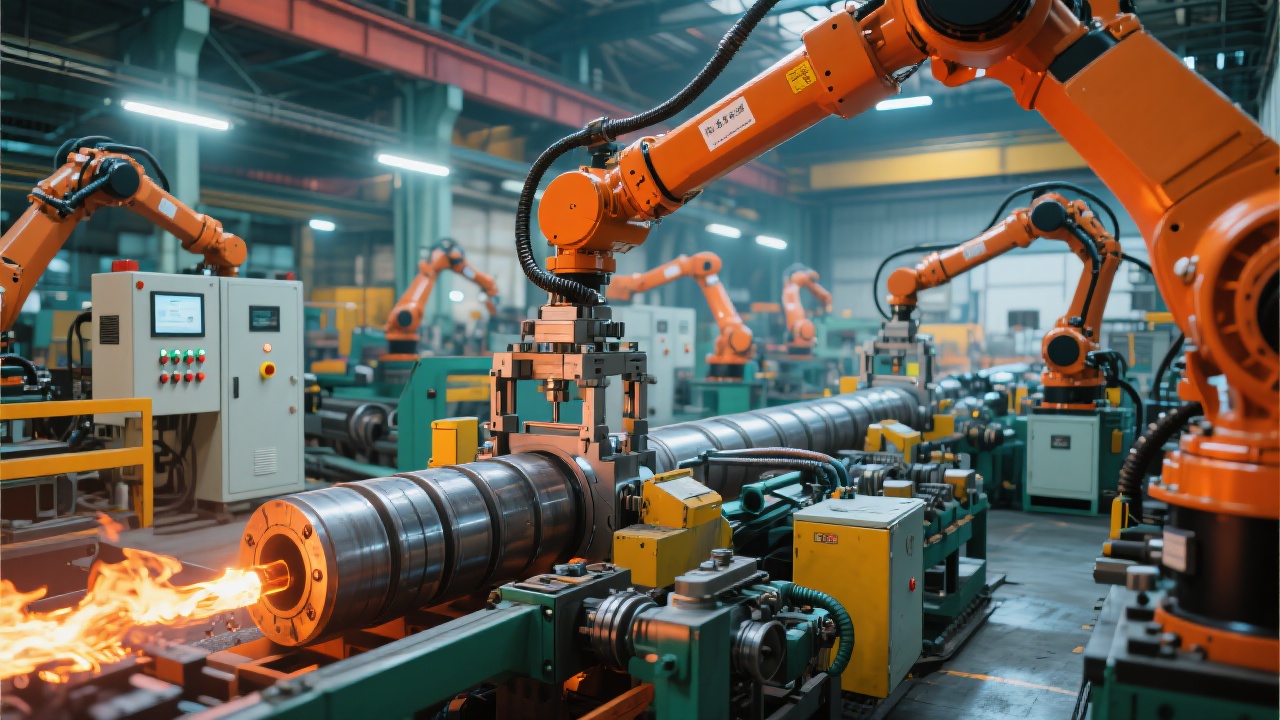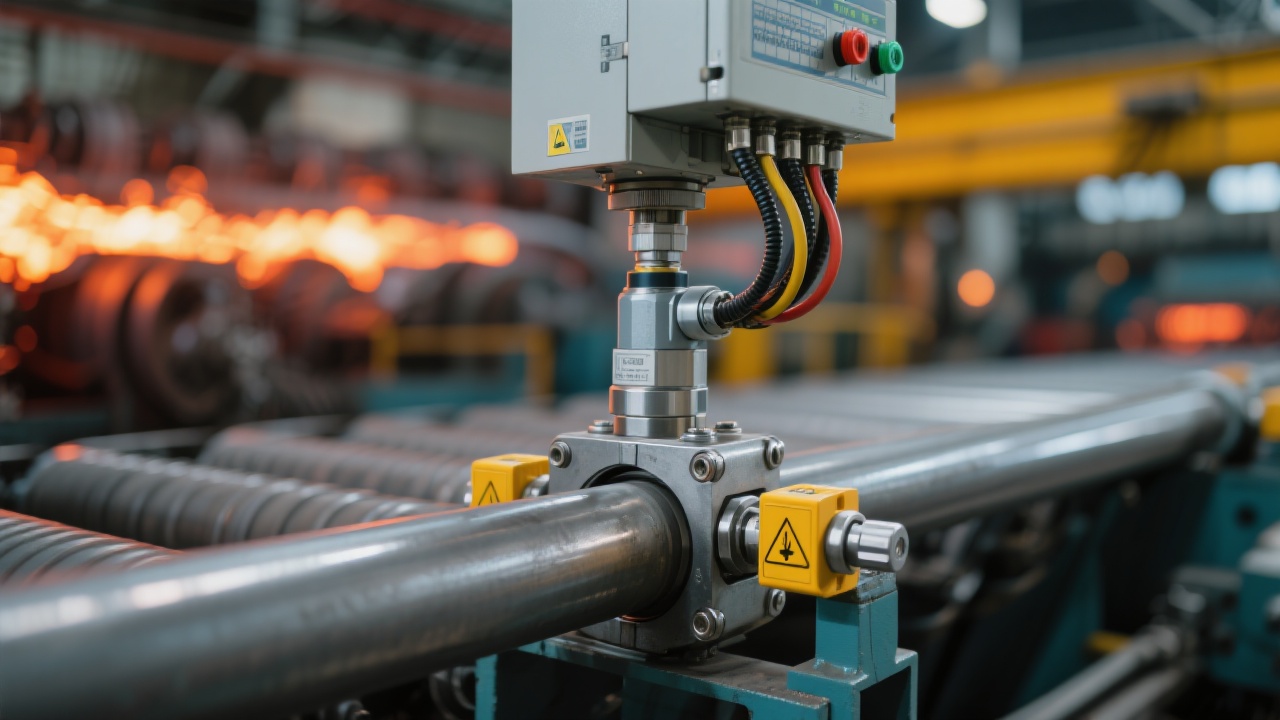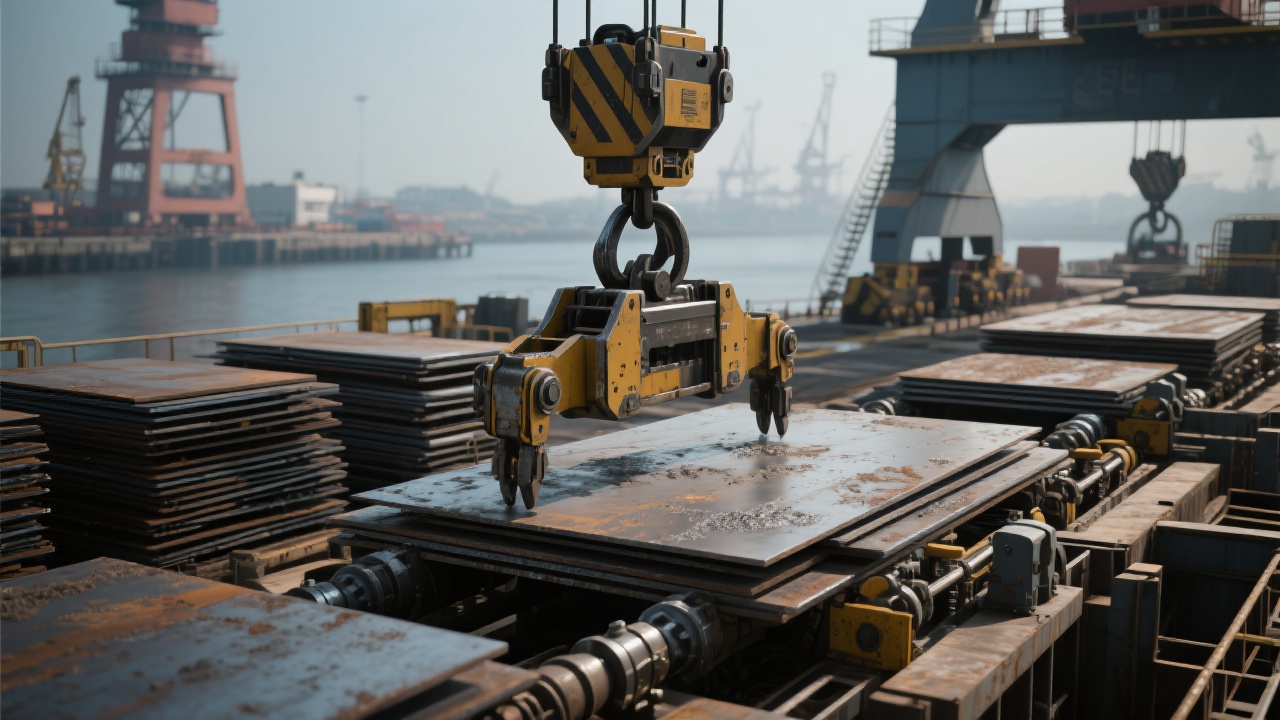
In the era of smart manufacturing, the integration of automated equipment in the steel industry has become a crucial factor in enhancing production efficiency and competitiveness. Dalian Tiding Heavy Industry has made remarkable achievements in this field with its independently developed pneumatic and durable slab clamps for hot - rolled high - temperature steel plates.
This article delves into a real - world case of the successful integration of these automated clamps into the hot - rolling production line of an overseas steel mill. It provides a comprehensive guide on the technical aspects of the integration process, aiming to help manufacturing users quickly master the efficient integration methods of automated clamps and improve the automation level and operational stability of their production lines.
The integration of the automated clamps involves seamless connections with multiple systems, including the PLC control system, the robot handling system, and the AGV trolley. The signal interface configuration between the automated clamps and the PLC system is a key step. By establishing a stable and efficient communication protocol, the system can accurately transmit control signals and feedback information. For example, through proper programming, the PLC can precisely control the opening and closing of the clamps according to the production requirements.

The setting of the action sequence logic is also of great importance. It ensures that the clamps, robots, and AGV trolleys work in harmony. For instance, the clamps need to open at the right time to pick up the steel plates, and the robots and AGV trolleys need to move in a coordinated manner to transport the plates to the designated locations. A well - designed action sequence logic can significantly improve the production efficiency and reduce the risk of errors.
Moreover, the construction of the safety interlock mechanism is a top priority. In a high - temperature and high - risk environment like a steel mill, safety is crucial. The safety interlock mechanism can prevent potential accidents by monitoring various parameters such as the position of the clamps, the pressure of the air source, and the operation status of the robots. For example, if the air pressure is too low, the clamps will automatically lock to prevent the steel plates from falling.
During the on - site installation and debugging process, several key technical details need to be paid attention to. The matching of the air source pressure is essential. If the air pressure is too high or too low, it may affect the normal operation of the clamps. Usually, the air source pressure should be maintained within a range of 0.5 - 0.7 MPa to ensure the stable operation of the pneumatic clamps.

The calibration of the limit switches is another critical step. Limit switches are used to determine the position of the clamps, and accurate calibration can ensure that the clamps operate within the specified range. In addition, anti - jitter measures should be taken to prevent the clamps from shaking during operation, which may cause damage to the steel plates or affect the accuracy of the handling process.
By analyzing multiple overseas customer cases, we can summarize the successful experience and application effects of the automated clamps. In one case, after the integration of the automated clamps, the production efficiency of the hot - rolling production line increased by 30%, and the error rate decreased by 20%. The stability and reliability of the production line have been greatly improved, which has enhanced the overall competitiveness of the steel mill in the market.

| Question | Answer |
|---|---|
| How long does it take to integrate the automated clamps? | The integration time usually takes about 2 - 3 weeks, depending on the complexity of the production line and the number of clamps. |
| What is the service life of the automated clamps? | Under normal operating conditions, the service life of the automated clamps can reach more than 5 years. |
Dalian Tiding Heavy Industry's automated clamps offer high safety, durability, and intelligent integration capabilities. They are the ideal choice for steel mills looking to improve their production efficiency and competitiveness. If you are interested in our products and solutions, please click here to learn more.

